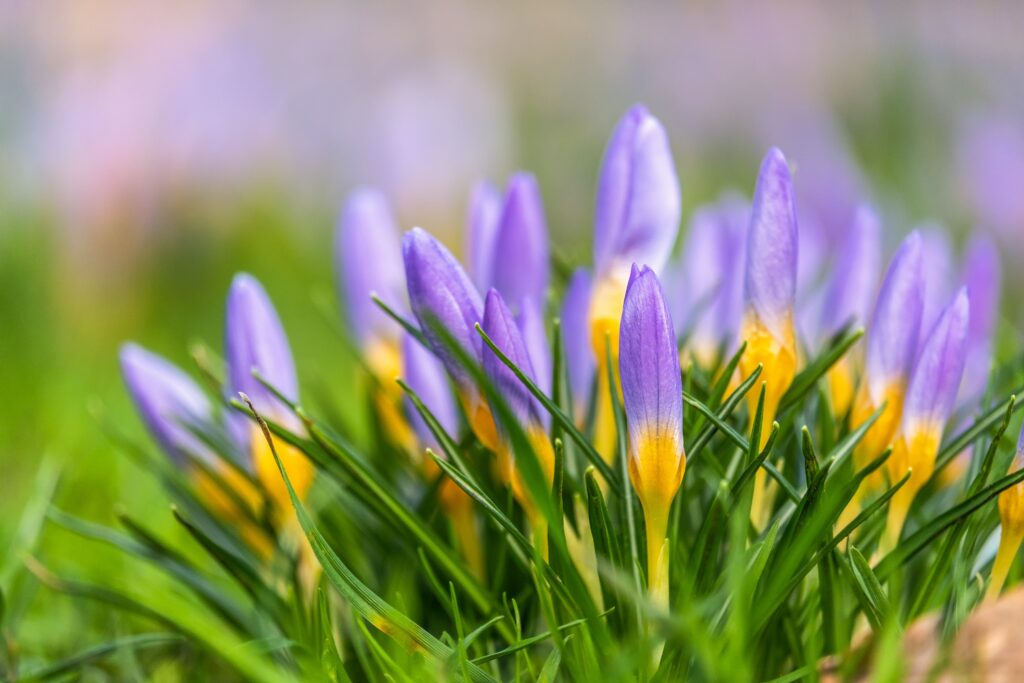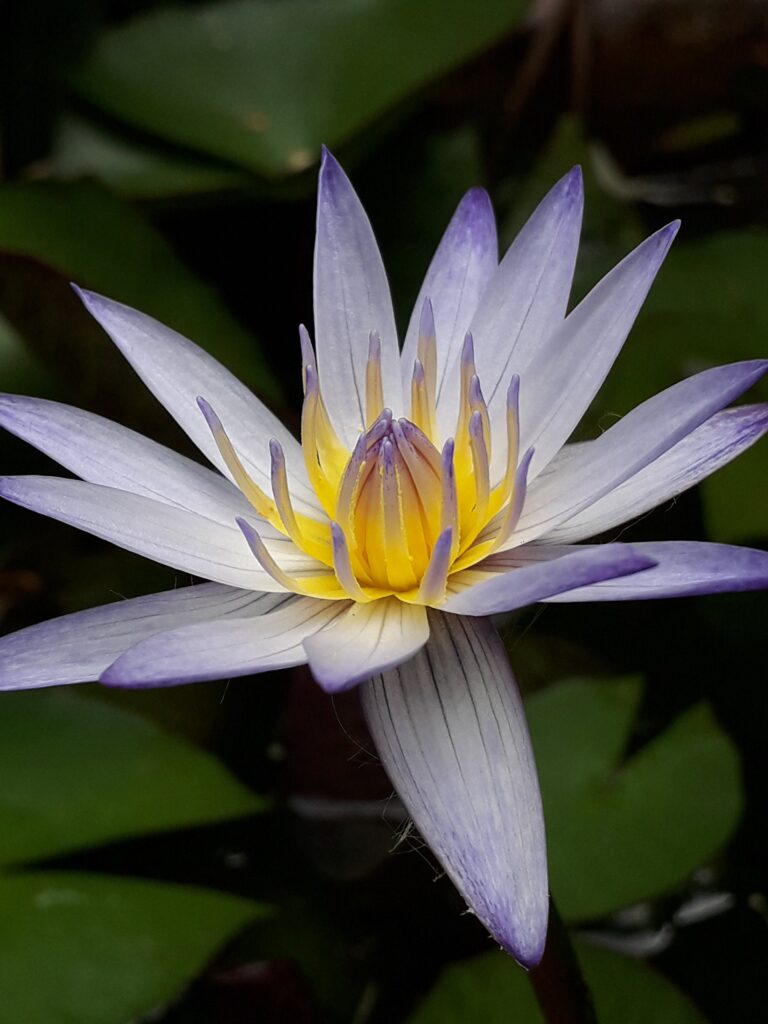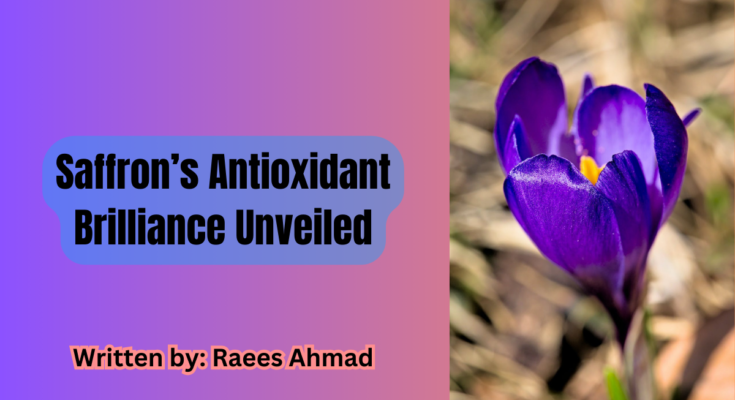Introduction: Saffron, the vibrant and aromatic spice derived from the Crocus sativus flower, has long been celebrated for its culinary prowess. Beyond its culinary applications, emerging research sheds light on the potential health benefits of saffron, particularly its antioxidant properties. In this article, we delve into the scientific intricacies of saffron’s antioxidant marvels.
The Compelling Compounds: Saffron owes its antioxidant prowess to key compounds, including crocin, crocetin, and safranal. These constituents have been the focus of various studies exploring their impact on oxidative stress and cellular health.
- Crocin and Crocetin:
- In a study published in the Journal of the American College of Nutrition (2007), researchers investigated the antioxidant activity of spice extracts, highlighting the significant antioxidant effects of saffron, with crocin and crocetin playing pivotal roles.
- Safranal’s Neuroprotective Role:
- Research published in Pharmaceutical Biology (2017) explored safranal’s neuroprotective effects. The findings suggested that safranal exhibited antioxidant properties, hinting at its potential to safeguard nerve cells from oxidative stress.
Beyond the Lab: Clinical Insights: While laboratory studies provide valuable insights, clinical trials offer a glimpse into real-world applications. A notable study (Pharmacopsychiatry, 2017) ventured beyond antioxidant properties, examining saffron’s antidepressant effects. Though not directly focused on antioxidants, the study suggested a broader spectrum of benefits associated with saffron consumption.
Understanding Antioxidants: Antioxidants play a crucial role in neutralizing free radicals, unstable molecules that can wreak havoc on cellular structures. The compounds in saffron contribute to this defense mechanism, potentially mitigating oxidative stress.

Potential Health Implications:
- Mood Enhancement:
- The antidepressant effects observed in the clinical trial imply a potential link between saffron consumption and mood improvement, possibly attributed to its antioxidant components.
- Neuroprotection:
- Safranal’s neuroprotective qualities hint at saffron’s potential role in safeguarding the nervous system against oxidative damage.
- Cellular Health:
- Antioxidants in saffron may contribute to overall cellular health, protecting against oxidative stress and potential long-term damage.
Dancing Molecules: Crocin, Crocetin, and Safranal: At the heart of saffron’s antioxidant prowess lie three key players: crocin, crocetin, and safranal. These compounds, meticulously crafted by nature, form the backbone of saffron’s ability to combat oxidative stress.
- Crocin and Crocetin Duo:
- A pivotal study in the Journal of the American College of Nutrition (2007) underscored the antioxidant potency of saffron extracts. Crocin and crocetin emerged as primary contributors, showcasing their prowess in neutralizing free radicals and defending cellular integrity.
- Safranal’s Neuroprotective Overture:

- In the realm of neurological well-being, safranal takes the lead. Research in Pharmaceutical Biology (2017) suggested that this aromatic compound not only lends saffron its distinctive fragrance but also extends a shield of neuroprotection. Its antioxidant attributes may play a crucial role in preserving delicate nerve cells from oxidative assault.
Clinical Encore: Beyond Petri Dishes to Human Terrain: While laboratory experiments lay the groundwork, clinical trials provide a compelling narrative of saffron’s potential benefits in real-world scenarios. A noteworthy investigation published in Pharmacopsychiatry (2017) delved into saffron’s antidepressant effects. Though the primary focus wasn’t antioxidants, the findings hinted at a broader spectrum of health enhancements associated with saffron consumption.
Decoding the Antioxidant Armor: To understand saffron’s impact, we must decipher the language of antioxidants. These molecular guardians patrol our bodies, neutralizing free radicals before they inflict harm. Saffron’s ensemble of antioxidants participates in this intricate dance, potentially offering protection against oxidative stress and its repercussions.
Health Implications Unveiled:
- Elevating Mood:
- The antidepressant effects observed in the clinical trial suggest that saffron might not only tantalize taste buds but also elevate mood—a potential synergy of antioxidants and mental well-being.
- Guardians of the Nervous System:
- Safranal’s role in neuroprotection raises intriguing possibilities. By shielding nerve cells from oxidative stress, saffron may emerge as a defender of the nervous system, influencing cognitive health.
- Cellular Vigilance:
- The overarching theme is cellular health. As antioxidants in saffron stand sentinel, cells may be fortified against the onslaught of oxidative stress, contributing to long-term well-being.
The Chromatic Palette: Crocin’s Vivid Flourish:
- A Chromatic Tale: Crocin, the compound responsible for saffron’s vivid hue, unfurls a chromatic tale of antioxidant brilliance. In a captivating performance documented in the Journal of the American College of Nutrition (2007), crocin emerges as a potent defender, weaving its antioxidant magic in the labyrinth of cellular structures.
- Guardians of Cellular Integrity: This compound, akin to an artist’s brushstroke on a canvas, paints a protective layer over cells, standing guard against the marauding free radicals seeking to disturb the delicate equilibrium.
Crocetin’s Intricate Choreography:
- Beyond Color: Exploring Crocetin’s Richness: Beyond the mesmerizing color, crocetin steps into the limelight with its own intricate choreography. Studies suggest that this compound, akin to a seasoned dancer, exhibits antioxidant prowess that extends beyond mere aesthetics.
- The Cellular Pas de Deux: In the intricate pas de deux with free radicals, crocetin pirouettes through cellular landscapes, neutralizing threats and offering a glimpse into the potential cellular resilience bestowed by saffron.
Safranal’s Aromatic Overture: A Scented Shield for Nerve Cells:
- Aromatic Alchemy: Safranal, the aromatic overture in saffron’s composition, is not merely a fragrance but a scented shield for nerve cells. In the pages of Pharmaceutical Biology (2017), its neuroprotective role is illuminated, suggesting a symphony of health benefits beyond the olfactory delight.
- Sentinels of Neurological Harmony: As safranal performs its aromatic ballet, it fortifies nerve cells against the discordant notes of oxidative stress, offering a unique contribution to neurological well-being.

Clinical Crescendo: Antidepressant Echoes and Beyond:
- Antidepressant Echoes: In the clinical corridors of Pharmacopsychiatry (2017), saffron’s story takes an unexpected turn. While not the primary protagonist, antioxidants in saffron echo through the findings, hinting at a potential link between saffron consumption and mood elevation.
- Beyond Antioxidants: A Multifaceted Narrative: The clinical saga reveals a multifaceted narrative, suggesting that saffron’s benefits extend beyond its antioxidant repertoire, painting a canvas where mental well-being intertwines with biochemical subtleties.
Beyond the Molecules: Decoding Antioxidant Resilience:
- Antioxidants as Molecular Sentinels: To comprehend saffron’s impact, one must decipher the language of antioxidants. These molecular sentinels patrol the cellular realm, neutralizing free radicals with precision akin to a well-choreographed performance.
- Saffron’s Antioxidant Tapestry: As saffron’s antioxidants weave their tapestry, cells may find themselves enveloped in a symphony of resilience, safeguarded against the relentless march of oxidative stress.
Conclusion: As research into saffron’s antioxidant benefits continues to unfold, the spice stands out not only for its culinary allure but also for its potential contributions to human health. While promising, it’s crucial to interpret findings with a cautious optimism, acknowledging the need for further research, especially in human clinical trials. As we savor the flavors of saffron-infused dishes, we might also be nurturing our well-being through its antioxidant-rich profile.


